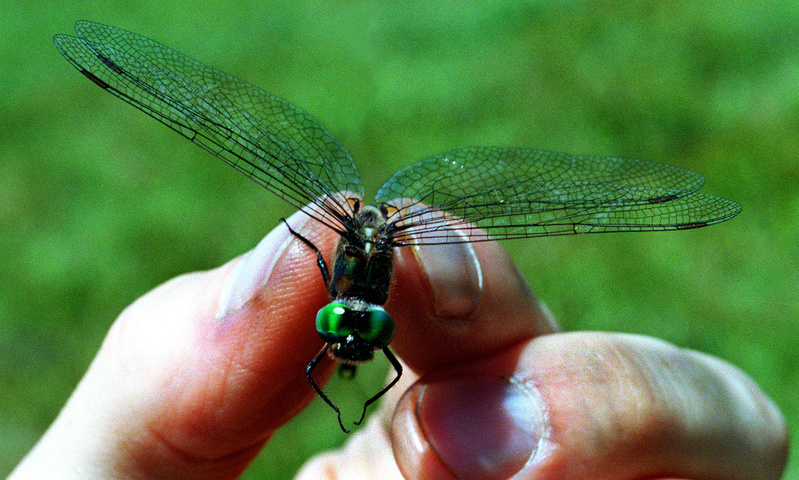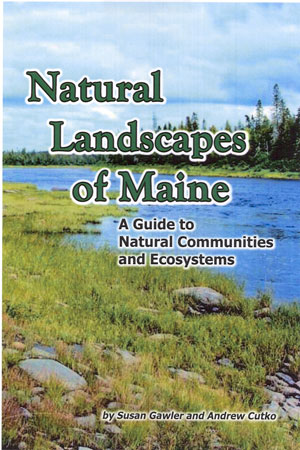The Maine Natural Areas Program recently published a book that will be of interest to any naturalist in Maine.
“Natural Landscapes of Maine: A Guide to Natural Communities and Ecosystems,” by Susan Gawler and Andrew Cutko, describes 104 natural communities in Maine, based primarily on the distribution and abundance of woody plants.
Some of the community types, like beech-birch-maple forest, hemlock forest or spruce-northern hardwoods forest, cover vast tracts of Maine. Others, like Atlantic cedar bog or pocket swamp or jack pine woodland, are much smaller. However, two pages are devoted to each community.
Several photographs of the habitat or particular characteristic species are provided along with a map showing the occurrence of the community type in Maine. A list of the characteristic plant species is provided along with a list of any rare plants found there. Each account has a list of sites with public access so interested people can visit an example of that community type.
Each account also lists particular bird, butterfly, moth, dragonfly and other animal species that occur in each community type. The inclusion of this information makes the book a valuable resource for any birder looking for birds with restricted distributions in the state.
As examples, red maple swamps provide good habitat for Louisiana waterthrushes and yellow-throated vireos, and spruce-fir krummholz is the place to go for Bicknell’s thrushes, blackpoll warblers and spruce grouse.
Dr. Mac Hunter, a faculty member in the Department of Wildlife Ecology at the University of Maine, provides an insightful foreword to the volume. He writes about the value of natural community classifications as a tool for conservationists.
We can protect many species by preserving a particularly nice tract, for example, of maritime spruce-fir forest. We know that all the many species found there will be protected. This habitat-scale means of conservation is called a coarse-filter approach. Of course, some species may need a fine-filter approach, conservation practices developed for the particular needs of a threatened species.
Protecting lakes would not eliminate the threat of mercury and organic contaminants for common loons on those lakes, so a fine-filter approach is needed there. For the coarse-filter approach, the landscape classifications developed by Gawler and Cutko are essential.
Serving in many respects as a field guide to the habitats of Maine, this book also is a celebration of the amazing biodiversity of the state. I enjoy picking up the book and just sampling a few of the landscape types.
We live in a state of great natural riches.
DRAGONFLIES
A bird in flight is amazing in its grace and power. But have you ever carefully watched a dragonfly in flight?
Dragonflies can fly at speeds up to 45 mph and their aerial acrobatics are unparalleled. They are such agile fliers that they are able to avoid most potential predators.
We do have one bird species in Maine, the purple martin, that preys regularly on dragonflies. In the southeastern United States, breeding Mississippi kites take dragonflies. Veteran hawk-watchers believe that these kites rely heavily on dragonflies for food during their fall migrations through Central America, which coincide with southern migrations of some dragonflies (most dragonflies are not migratory).
Besides spectacular flying abilities, dragonflies have other similarities to birds. Some species of dragonflies maintain breeding territories just as many birds do. Male dragonflies are generally more colorful than females, just as with many birds.
The best resource for identifying Maine dragonflies and the related damselflies is A Field Guide to the Dragonflies and Damselflies of Massachusetts (2nd edition) by Blair Nikula, Jennifer Ryan and Matthew Burne. Nearly all the species found in Maine are covered. Each species account has a couple of high-quality photographs and text on identification.
Details on ordering a copy are available at www.mass.gov/dfwele/dfw/nhesp/publications/nhesp_pubs.htm
BREWSTER’S WARBLER
In the last column, I wrote about the Brewster’s warbler that was recently seen by Becky Marvil, Marie Jordan and others in Biddeford. Marvil and Jordan are both skilled bird photographers and both sent me pictures of the hybrid bird. The photograph that accompanied the column was taken by Jordan rather than Marvil. My apologies!
Herb Wilson teaches ornithology and other biology courses at Colby College. He welcomes reader comments and questions at
whwilson@colby.edu
Copy the Story Link
Send questions/comments to the editors.




Success. Please wait for the page to reload. If the page does not reload within 5 seconds, please refresh the page.
Enter your email and password to access comments.
Hi, to comment on stories you must . This profile is in addition to your subscription and website login.
Already have a commenting profile? .
Invalid username/password.
Please check your email to confirm and complete your registration.
Only subscribers are eligible to post comments. Please subscribe or login first for digital access. Here’s why.
Use the form below to reset your password. When you've submitted your account email, we will send an email with a reset code.